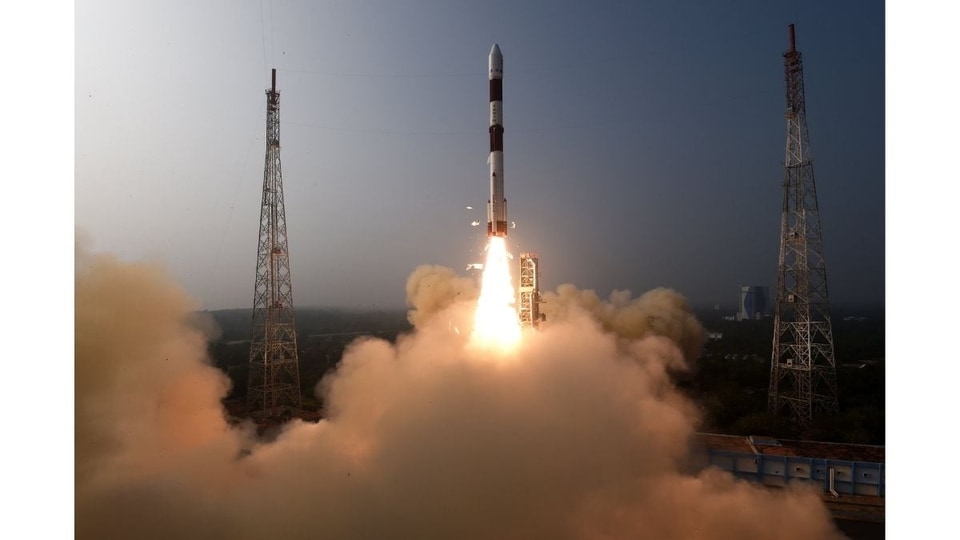Exploring the Cosmic Phenomena of Supernovas and ISRO's XPOSAT: A Stellar Journey
ISRO XPOSAT, equipped with the XSPECT (X-ray SPECtroscopy and Timing) payload, is set to revolutionize our understanding of supernovas and black holes.

“The nitrogen in our DNA, the calcium in our teeth, the iron in our blood, the carbon in our apple pies were made in the interiors of collapsing stars. We are made of starstuff.”
- Carl Sagan
This profound statement by Carl Sagan beautifully captures the essence of our cosmic connection. The stars, those twinkling specks in the night sky, are not just distant suns but the very vessels where the recipe of life was cooked. Among the most dramatic events in this cosmic saga are supernovas, stellar explosions of unimaginable scale and power, which seed the universe with the building blocks of planets and life.
A supernova occurs when a star reaches the end of its life cycle. The star's core, having exhausted its nuclear fuel, can no longer support the outward pressure against the force of gravity. This imbalance leads to a catastrophic collapse, followed by a massive explosion. In mere seconds, a process equivalent to the collapse of one million Earths takes place, releasing enormous shock waves that tear the star apart.
We are now on WhatsApp. Click to join.
There are primarily two scenarios that lead to a supernova. The first, as described, is the gravitational collapse of massive stars. The second occurs in binary star systems, where a white dwarf star, as dense as the Sun but only as large as Earth, starts siphoning off material from a companion star. This can reignite nuclear fusion, leading to an explosive end.
The nearest known white dwarf, Sirius B, lies 8.6 light-years away, part of the Sirius binary system. Interestingly, the earliest recorded supernova, HB9, was likely observed in the Indian subcontinent around 4500±1000 BC.
Supernovas are essential cosmic events, as they create and disperse elements like calcium and iron into space. These elements, crucial for life as we know it, are then incorporated into new stars and planets. In fact, the Solar Nebula, the cloud of gas and dust that gave birth to our solar system, was enriched with elements from previous supernovas.
Enter the Indian Space Research Organisation's (ISRO) XPOSAT, launched on January 1, 2024. Equipped with the XSPECT (X-ray SPECtroscopy and Timing) payload from the U R Rao Satellite Centre, XPOSAT is set to revolutionize our understanding of supernovas and black holes. The satellite's first target was Cassiopeia A, a supernova remnant with a temperature of around 30 million Kelvin, expanding at a velocity of around 4000 km/s. In 2013, astronomers found phosphorus in Cassiopeia A, bolstering the theory of supernova nucleosynthesis – the process by which supernovas create new elements.
XPOSAT's study of Cassiopeia A confirmed the presence of elements like Magnesium, Silicon, Sulphur, Argon, Calcium, and Iron, reaffirming the role of supernovas in cosmic chemistry. This breakthrough is not just a scientific triumph but a reminder of our starry lineage.
So, remember next time you look at the stars, you are not just looking at distant suns but at the very origins of our existence. ISRO's XPOSAT, by peering into the heart of supernovas, is helping us understand not just the universe but ourselves. We are, indeed, made of starstuff.
(By Manish Purohit.
The author is an accomplished Solar Energy and Spacecraft Solar Panel Expert with extensive experience in managing critical space missions including Chandrayaan 2 and Mangalyaan. His expertise in solar panel fabrication, technology implementation, and cost-effective solutions has been pivotal in advancing space exploration and solar energy initiatives.
Twitter: @purohitmanish)
Also, read these top stories:
The worst of CES 2024! The worst gadgets could harm us or our society and planet in such “innovatively bad” ways that a panel of self-described dystopia experts has judged them “Worst in Show.” Some interesting details in this article. Check it out here. If you enjoyed reading this article, please forward it to your friends and family.
Trust in AI? Not even if your eyes tell you to! They are lying. Technology will only get us so far in dealing with AI-generated photos, of which there will be many. Find out what we must become here. If you enjoyed reading this article, please forward it to your friends and family.
The founder-CEOs are feeling the heat! What happened to OpenAI's Sam Altman, Bumble's Whitney Herd indicates that, as profitability becomes a priority at startups, pendulum swings back from the “visionary” founder to the professional. Check out the shocking change here.
Catch all the Latest Tech News, Mobile News, Laptop News, Gaming news, Wearables News , How To News, also keep up with us on Whatsapp channel,Twitter, Facebook, Google News, and Instagram. For our latest videos, subscribe to our YouTube channel.

























